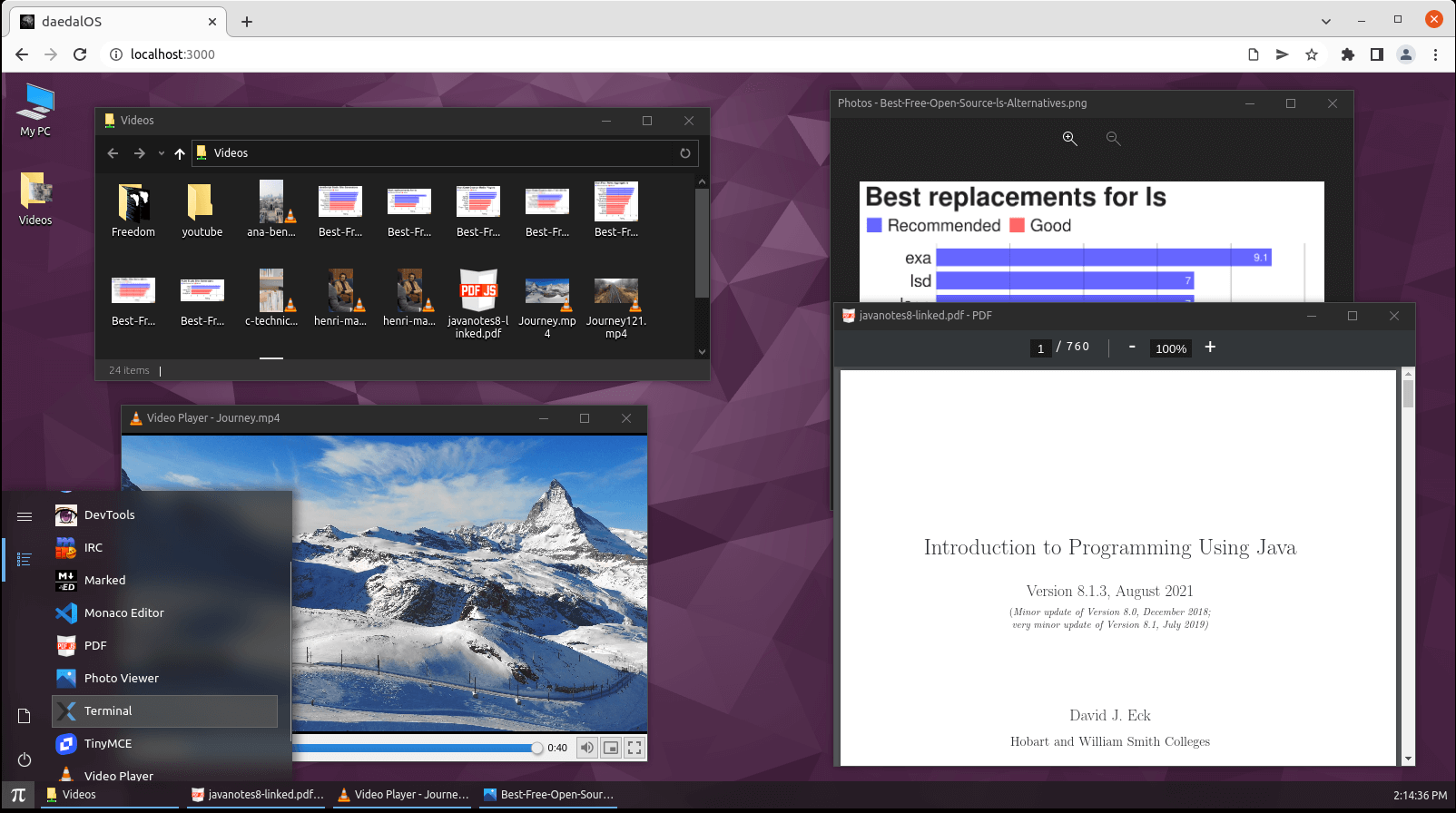In Operation
To access the desktop fire up your favourite web browser and enter the location:
http://localhost:3000
The first thing you’ll want to do is to map a directory as it gives you access to your files. Right click on the animated background and you’ll be presented with a menu offering you the option to map a directory. This lets you view files in that directory which remains available until all tabs for the site are closed. Alternatively, simply drag and drop files and folders to the daedalOS interface. Besides the useful drag and drop file support, the file system support is particularly good.

The desktop integrates a range open source available including a web browser and a video player (Video.js) which supports HTML5 video and modern streaming formats. You get a photo viewer that supports APNG, AVIF, GIF, JPEG, PNG, SVG, and WebP formats. We love the inclusion of PDF.js, a sublime PDF viewer, although it’s slow in loading even simple PDFs.
You also get a console for developers (DevTools), a code editor (Monaco Editor), a Markdown parser and compiler (Marked), a rich text editor (TinyMCE), an IRC client, a very simple terminal emulator, and an audio player (Webamp).
Additionally there are even several emulators including Wine which lets you run Windows software and js-dos, a DOS emulator. daedalOS also integrates Ruffle to run JavaScript applications or Virtual x86, an operating system emulator.
Play games like JS-Doom and Space Cadet Pinball too. And there’s Byuu, an emulator for multiple video game consoles, including the Super Nintendo Entertainment System.
The styling of the web page will be familiar to Windows users although the project had to abandon the Windows icon in favour of the π symbol due to legal concerns. But we still have a classic Start menu, tasks with a clock in the bottom right hand corner.
The developer of the project includes animated wallpaper, a choice that won’t be appreciated by users of low-resource machines.
Summary
The desktop looks great with beautiful styling. Certainly a lot of work has been invested! A definite thumbs up to the developer of the project.
While the desktop offers access to a range of open source programs it’s lacking in many respects. Many users won’t be able to manage without their favourite social media communication tool – IRC simply doesn’t cut the mustard these days. And we soon started to miss our dedicated email client, even before thinking how could we manage without software like RStudio, GIMP, LibreOffice, Shotcut and many more. And you can’t, of course, install apps for yourself.
However, we’re actually very keen on seeing this project develop further. It’s rather cool running your desktop environment entirely in a web browser. And performance is not shabby either, at least with a reasonably powered machine.
If you have a slow afternoon but not a slow computer, check out daedalOS.
Website: github.com/DustinBrett/daedalOS
Support:
Developer: Dustin Brett
License: MIT License
daedalOS is written in JavaScript and TypeScript. Learn JavaScript with our recommended free books and free tutorials. Learn TypeScript with our recommended free books and free tutorials.
Pages in this article:
Page 1 – Introduction / Getting Started
Page 2 – In Operation / Summary

A desktop in JavaScript, quite interesting
This reminds me of an ancient project put out by a now-defunct company (Rocklyte) called Athene. It used a custom engine to power a GUI whose interface (and all programs for it) was written in a custom language based off of XML. The goal was to create an OS-independent operating environment, with “desktops” available for Linux and Windows. It didn’t succeed even though the project was cool as cucumbers. I ran the actual commercial Linux distro on a desktop and laptop since the desktop interfaces were so much faster than KDE or Gnome at the time.